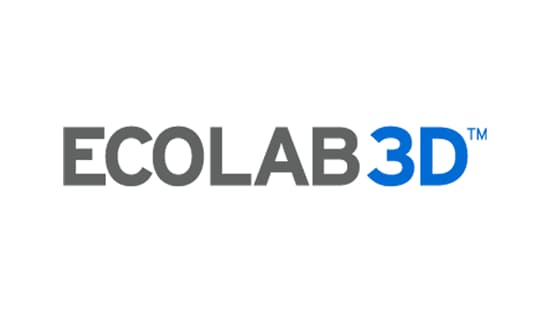AI主導の時代におけるウォーター・スチュワードシップの現状を把握
世界では、主に AI などの革新的な技術、異常気象事象、そして変化する経済の影響により、エネルギーと水の使用に対する需要が高まっています。
- 2030年までに、AI 関連の成長には、インドの年間需要に相当するさらなる電力1 と、米国の年間飲料水の需要2を満たすのに十分な量の水が必要になると推定されています。
- データセンターは、2027年までに年間 1 兆ガロンを超える真水を使用する可能性があります3
- 2030 年までに真水の需要と供給の間に56%のギャップが生じると予測されており4 、さらに水の需要は2050年までに最大30%増加すると見込まれています5。
エコラボは、サステナビリティの世界的リーダーとして、こうした水問題の解決に貢献しています。当社の 2025 年調査では、水に関する最新の認識や懸念を明らかにし、企業、政府、非営利団体が効果的な水戦略を策定するための指針を提供します。こうした戦略を策定し、水を確保できる未来に向けて前進するためには、世論の認識を理解することが不可欠です。
2025 年エコラボ Watermark 調査の主な結果
水:AI がもたらす隠れたコストと可能性
多くの消費者がAIの膨大な電力消費を認識している一方で、その大幅なウォーターフットプリントについてはあまり知られていません。この認識のギャップは、特にアジア・パシフィック、IMEA、ラテンアメリカで顕著です。
AI 運用を支えるために各資源が現在どの程度使用されているかに関する消費者の認識:

中国
81% 電力
77% 水

IMEA
78% 電力
61% 水

ラテンアメリカ
68% 電力
51% 水

アジア・パシフィック
60% 電力
43% 水

ヨーロッパ
59% 電力
46% 水

米国
55% 電力
46% 水
データは、同意の割合を示しています:
企業は、責任ある天然資源の利用のために
AIを活用すべきである
AI運用における電力需要を企業が責任を持って管理できるかについての信頼度

IMEA
2026
76%
63%

中国
2026
72%
77%

ラテンアメリカ
70%
49%

ヨーロッパ
2026
54%
37%

アジア・パシフィック
51%
37%

米国
49%
39%

スマートな水管理:消費者が求める企業によるスマートな水の再利用
消費者の間では、水不足への対応として企業がスマートな水管理を優先すべきだという認識が広く浸透している一方で、実際にこれらの企業が水の再利用ソリューションを効果的に実践していると感じる人は少数です。
日常業務を通じて、企業が水の削減、再利用、リサイクル、再生、回収を実施している考える 消費者の割合。

米国
43%

ヨーロッパ
44%

ラテンアメリカ
48%

アジア・パシフィック
48%

IMEA
67%

中国
74%
世界中の消費者の間では、次のような共通認識が広がっています:
企業は、水資源のレジリエンスを高めるために、技術やインフラへの投資を優先すべきである。
へ企業が投資すべきと考える 消費者の割合:

ラテンアメリカ
84%
85%

IMEA
2026
82%
82%

中国
2026
77%
76%

ヨーロッパ
2026
72%
71%

アジア・パシフィック
71%
70%

米国
68%
67%
責任ある水管理を実践する企業は、消費者から強い関心を集めることが期待できます。
これらの企業から
積極的に情報を得ようとする
消費者の割合:

ラテンアメリカ
82%

IMEA
2026
78%

中国
2026
68%

アジア・パシフィック
61%

ヨーロッパ
2026
61%

米国
61%
ウォーターパートナーシップ
いかなる団体も、水問題を単独で取り組むことはできません。強力なパートナーシップを築くことで、企業、政府、地域社会は協調的な取り組みを加速させ、解決策を導き出し、すべての人にとって水のレジリエンスがある未来を築くことができます。
ほとんどの地域で、消費者は水資源の保全に関して、企業( 製造業) を含む)と政府の責任を同程度に考えています。しかし、企業および政府共に、個人や非営利団体、自然保護団体と比べて貢献度が不十分であると、依然として批判を受けています。
以下のデータは、 各事業体がこれまで自国において水の保全にどの程度取り組んできたかについての消費者の認識を詳細に示しています。

ラテンアメリカ
42% 企業
55% 個人
48% 政府機関
60% 非営利団体

ヨーロッパ
2026
45% 企業
56% 個人
45% 政府機関
54% 非営利団体

米国
47% 企業
58% 個人
48% 政府機関
56% 非営利団体

アジア・パシフィック
2026
48% 企業
49% 個人
46% 政府機関
50% 非営利団体

IMEA
2026
63% 企業
69% 個人
79% 政府機関
67% 非営利団体

中国
2026
80% 企業
79% 個人
84% 政府機関
79% 非営利団体
世界的な水問題があるにもかかわらず、消費者はそれらに取り組む当社の能力について非常に楽観的な見方を示しています。
全地域で 60% を超える圧倒的多数の消費者が、水不足は
効果的に解決できると考えています。
水不足は効果的に解決できると考える
消費者の割合:

ラテンアメリカ
84%

IMEA
2026
83%

中国
2026
73%

米国
67%

ヨーロッパ
2026
66%

アジア・パシフィック
61%
異常気象事象
消費者は、気象の変化や自然災害の増加が水ストレスを悪化させ、
水の利用可能性と水質の両面で課題が生じていると感じています。
気候変動が水ストレスの悪化につながっていると考える消費者の割合:

IMEA
2026
81%

中国
2026
80%

ラテンアメリカ
79%

アジア・パシフィック
2026
69%

ヨーロッパ
2026
69%

米国
65%
消費者は気候変動対策を強く求めており、企業と政府双方に対して
強い期待を寄せています。
気候変動の影響を軽減するための取り組みを、
政府 や 企業 が優先的に行うことが非常に重要だと考える
消費者の割合:

ラテンアメリカ
87%
88%

IMEA
2026
81%
81%

中国
2026
76%
77%

ヨーロッパ
2026
71%
71%

アジア・パシフィック
70%
69%

米国
67%
67%
注目すべき年間の動向
清潔で安全な水へのアクセスが依然として世界的な重要課題である中、消費者の関心の高さは注目に値します。
清潔で安全な水に対する消費者の関心度(地域別):

中国
2026
96%

ラテンアメリカ
92%

米国

ヨーロッパ
2026
69%

IMEA
2026
67%

アジア・パシフィック
2026
63%
ほとんどの地域で、消費者は一貫して、農業および
食品・飲料製造業を最も水使用に責任ある産業として挙げています。
農業
食品および飲料

IMEA
2026
52%
37%

ラテンアメリカ
48%
44%

アジア・パシフィック
47%
36%

ヨーロッパ
2026
47%
33%

米国
43%
31%

中国
2026
29%
28%
ウォーター・スチュワードシップの促進
エコラボは 100 年以上にわたり、自社およびお客様の事業においてウォーター・スチュワードシップを優先することで、生命に不可欠な資源の保護に取り組んできました。エコラボは、全世界 40 以上の業種で、重要な業務プロセスにおいて水の使用量を最小限に抑えることで、気候や水問題に関する課題に対応できるよう企業をサポートしています。当社は、気候、水、ビジネスの成長目標を一致させることで、お客様が持続的な効果をもたらし、飛躍的な投資収益率(eROI)を達成できるよう支援します。
当社のソリューション
年間 1 兆ガロン以上の水を管理するエコラボは、Connected Chemistry™ とデジタルインサイト、
そして業界の専門知識を組み合わせることで、サステナビリティと成長を同時に推進しています。
貴社が事業運営においてスマートな水管理アプローチを取り入れられるようサポートするエコラボのサービスについて詳しくは、以下をご覧ください。

スマート・ウォーター・ナビゲーターでチャンスを見極める

Ecolab Water for Climate™ で全社的アプローチを採用

3D TRASAR™ 技術で水のパフォーマンスを管理

ECOLAB3D™ デジタルサービスで情報を可視化
当社プロジェクト
水のレジリエンスに取り組むことで、ビジネスの発展を促すことができます。以下のケーススタディでは、お客様が掲げるビジネス、水、気候に関する目標にプラスの影響をもたらすようサポートするエコラボの実績をご紹介します:
当社のパートナーシップ
主導的な非政府組織(NGO)とパートナーシップを組むことで、当社の事業、お客様やコミュニティが直面するグローバルな問題への理解を含め、影響力を高めます。その一部をご紹介します:
- Bloomberg Law、「AI Computing on Pace to Consume More Energy Than India, Arm Says」2024年4月: news.bloomberglaw.com/artificial-intelligence/ai-computing-on-pace-to-consume-more-energy-than-india-arm-says↵
- Lei, N., & Masanet, E.(2022年)およびゴールドマンサックス(2024年) のデータをエコラボで分析↵
- Making AI Less "Thirsty": Uncovering and Addressing the Secret Water Footprint of AI Models: www.goldmansachs.com/insights/articles/AI-poised-to-drive-160-increase-in-power-demand、および TIME、「How AI Is Fueling a Boom in Data Centers and Energy Demand」: time.com/6987773/ai-data-centers-energy-usage-climate-change/↵
- 世界資源研究所:「Setting Enterprise Targets: Modeling Downstream Water Use and Consumption」:企業目標の設定:Modeling Downstream Water Use and Consumption | World Resource Institute↵
- 世界資源研究所、「Securing Freshwater for All(すべての人のための真水の確保)」:www.wri.org/freshwater↵


